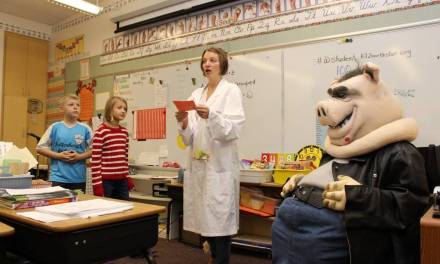As the landscape has shifted away from teacher performance observations to learning walks, there has been some discussion as to how they can best be implemented.
Here we want to consider two questions: what are the focuses of learning walks, and how can leaders make sure that they’re looking for the right things?
Three Focuses – 25 Key questions
While some schools undertake learning walks that visit classroom after classroom, others visit a single class at a time, followed up with discussions with the teaching team.
The effectiveness of different methods is certainly a matter of debate, however some argue that as long as they enhance understanding of learners’ everyday experiences, then the learning walk has done its job.
With this in mind, let’s dive into the three focuses of learning walks.
Learning walks should:
- Help you gain an accurate picture of your learners’ everyday experiences
- Build a school culture where learners embrace other educators in the classroom setting
- Break down the negative feelings teachers have about feeling judged – instead creating chances to collaborate – both with other teachers and with management
One of my colleagues proudly boasted how he’d just finished a Q&A session when a member of SLT dropped in on a ‘learning walk’. So he stopped the students again to ask them exactly the same questions he’d just asked. He was told that this was ‘excellent practice’. Why exactly is it good for the students to be stopped every five minutes just to prove something to someone who with a modicum of intelligence could find out what progress had been made through asking individual children? Why is this ‘excellent practice’ when that time could have been spent doing something more productive?
Let’s now look closely at each focus, and establish how learning walks can work for you.
To create genuinely valuable learning walks, many questions must be answered to establish a best-practice approach. The exact details can be changed later on, but having a concrete approach allows for trial and error, eventually uncovering best-fit practices for your school.
Focus one
Gain an accurate picture of your learners’ everyday experiences
- Do we inform teachers when the walk will take place?
- If so, can we be certain that we experience sessions in their natural state?
- Will we walk at lots of different times of the year, days of the week and different times of the day?
- If we don’t, how else can we get a balanced picture of learners’ experiences?
- Should we immediately bring up something that isn’t quite as we would expect it to be, or investigate how typical this event is for the group of learners in question?
- Should we decide where to look or should we take an open approach?
Focus two
Build a school culture where learners embrace other educators in the classroom setting
- Who will undertake the learning walks?
- Is it exclusively or mostly managers?
- If it is, what message does this send out?
- If teachers are excluded, are they missing out?
- How will you feed back to individual teachers?
- Is this positive and does it create change?
- If so, does it differ to observations?
- Do you make sweeping judgements about what is experienced in the short space of time during a learning walk?
- If you do, could it be that assumptions are unfairly being made?
- Are you ensuring that what is discovered during learning walks is used to assist teaching teams who share and reflect?
- When and how does this take place, and what is the impact of it?
Focus three
Break down the negative feelings teachers have about feeling judged – instead creating a chance to collaborate
- How do you record the walk – do you take a clipboard, a laptop or tablet?
- If so, how does this make teachers feel?
- How does this differentiate from how notes are taken during observations (there’s no need to capture evidence during learning walks, but this is often how they are undertaken)
- How does this support the culture you are striving to create?
- How pleasant is the learning walk for the teacher?
- How do you make the teacher feel at ease?
- How do you stay open-minded, unbiased and demonstrate to teachers that all of you are learning – yourself included?
- When you enter a room do you say ‘I’m on a learning walk’?
Learning walks can help bring a more nuanced and realistic appreciation of teachers’ ability to deliver the curriculum and manage their classes.
However, if teachers don’t feel that the scope of the learning walks has been communicated effectively, these classroom visits can be seen as intrusive and counter-productive.









